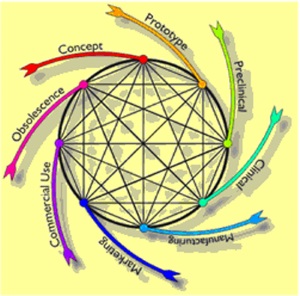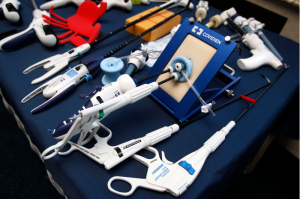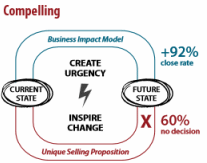Category: “Whitepapers”
- Whitepaper: 10 Commandments for Medical Device Product Development
- Whitepaper: HSCA’s report on GPOs in Healthcare for 2014
- Whitepaper: 2014 Electronic Health Record, status and challenges from the Robert Wood Johnson Foundation
- A CEO Checklist for High-Value Health Care
- Report: Medical Devices produce Healthcare Savings
- Digital Exposure & Radiation Safety Including Technique Development
- Hospitals have a target on their backs: CMS exorbitant payment to “bounty hunters
In their attempt to claw back money for Medicare and Medicad, CMS pays private auditors as part of the RAC program (recovery auditing program). Auditors get from 9% to 13% of the money they accuse hospitals of miss-billing for. Unfortunately they have a dismal record because a large percentage of claw back funds get returned to hospitals. So the question is with such a large financial incentive are the auditors making up these false charges against hospitals? AHA answers that in this whitepaper to CMS.
- HIMSS 2013 Annual Report of the U.S. Hospital IT Market – including modality penetration
If you sell in the IT space or Diagnostic Imaging Equipment this report will tell you what is being purchased, trends, and what level of penetration has occurred. For example, over 98% of academic centers have already purchased CR and DR. They are not your low hanging fruit. To find out what is read this very detailed HIMSS report.
- Whitepaper: Hospital consolidation – M&A Outlook report 2014
- Joint Commission’s (JCAHO) 2103 Report on Quality and Safety – the Top US Hospitals
- The health system haves and have nots of ACA expansion
- Whitepaper: the impact of ACA on private practice in the US
The independent, private physician practice model will be largely, though not uniformly, replaced.
- Whitepaper: Measuring and accountability for Healthcare spending
- Estimates of Medical Device Spending in the United States
"In view of the conventional wisdom about the role of medical technology in driving up costs, it is surprising that the cost of medical devices has risen little as a share of total national health expenditures. It is also striking that, unlike most other areas of medicine, the prices of medical devices have actually been growing more slowly than both the overall medical or consumer price index."
- Higher Mammography Screening Costs Without a predictable Clinical Benefit: the Case of digital Mammography
"Money directed at technologies not shown to have meaningful clinical benefit beyond the conventional technology result in wasted health care dollars that may have been better spent on care with demonstrated evidence for improving health. Tomosynthesis is the newest breast cancer screening technology rapidly diffusing into community practice with minimal comparative effectiveness evidence that the benefits of the new technology outperform digital mammography in a clinically important way."
- SIMULTANEOUSLY LOWERED COMPUTED TOMOGRAPHY RADIATION DOSE AND IMPROVED IMAGE QUALITY
- HSCA publishes its 2014 GPO study: GPO’s alive, doing well, and driving the supply chain with over $864 Billion in savings
- IT buying differnces between For-Profit and other kinds of hospitals – where you should be selling IT (or not)
For-Profit hospitals have dramatically shifted their buying from multiple IT solution purchases to single purchases. Government and Not-For-Profit hospitals continue to have multiple IT initiatives and purchases in the same year. This has important sales implications: don't try to sell into For-Profit facilities if they are already implementing a new IT solution - get on their next buy radar. The Dorenfest Institute for Health Information and Healthcare Information and Management Systems Society (HIMSS) have extensively analyzed the Healthcare IT space.
- The Discipline of Service Line Management
- ACOs: A Step in the Right Direction
- Whitepaper: Radiation dosimetry in digital breast tomosynthesis:
- Health Care Price Growth Moderates
Health sector economic indicators that we need to be aware of. For example: drug prices are up while hospital charges are down. Good news if you're in the pharm business; not good news if you sell high dollar capital equipment to hospitals. Since the recession in 2007 Healthcare costs are up 14.5% while the economy as a whole deflated 10.5%. That means healthcare spending will be forced to constrict. This and many other useful facts are in this whitepaper.
- 2014 Estimates of Medical Device Spending in the United States
- Impact of the Medical Device Tax
- How US healthcare companies can thrive amid disruption
Although healthcare has been changing for decades—think about the introduction of diagnosis-related groups (DRGs) or the initial push toward managed care in the 1980s—the Affordable Care Act (ACA) promises to accelerate both the rate of change and the level of uncertainty confronting the industry.
- US Senate Report: Improving Audits – How We Can Strengthen the Medicare
- Million dollar messaging – the key to having sales conversations and business development
1. Your buyers are saying one thing and doing another
2. There is a big difference between problem finding vs. problem solving
3. Facts alone don't create insight, nor appeal to the customer
4. Salespeople must practice in order to deliver messaging well
5. Timing, appropriateness, and delivery make or break communication
6. Goal is conversations - SALES - not Best Friends Forever BFF
7. Discounting is a marketing/sales problem
8. Give aways lose sales
- Important: here are the rules you have to comply with on service – JCAHO speaks
In its ongoing quest to align its standards to those of the Centers for Medicare & Medicaid Services (CMS), The Joint Commission today issued another revision of its rules for preventive maintenance. This document also includes the rules that service providers must follow in order to be in compliance, such as record keeping, and safety checks after a major repair.
- What is Service Line Managment?
- The Power of Strong Financial Risk Management in Healthcare Organizations
As healthcare moves away from a fee-for-service payment environment to one that encourages reimbursement for quality and value, chief financial officers face a damning reality: Revenue and income will be strained as hospitals make a push to keep patients out of their four walls when necessary.




